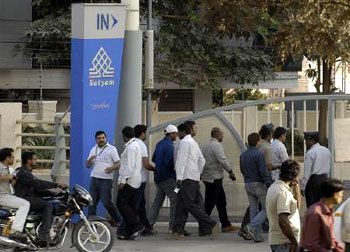It was in January of 2009 that Mr Raju had confessed serious financial irregularities.
 On Thursday, the Hyderabad-based special court that was trying the case arising out of the giant accounting scam unearthed at Satyam Computer Services finally delivered its verdict.
On Thursday, the Hyderabad-based special court that was trying the case arising out of the giant accounting scam unearthed at Satyam Computer Services finally delivered its verdict.
Satyam’s former chairman, B Ramalinga Raju, once an icon of Indian information technology, was convicted, as were nine others.
The end of a long, long road is in sight.
It was in January of 2009 that Mr Raju had confessed serious financial irregularities.
On the seventh day of that month, after an abortive attempt to cover up a multi-year fraud through the purchase of other companies owned by Mr Raju’s relatives failed, the company’s chairman admitted that Satyam’s numbers were almost entirely fictional. Thousands of crores of rupees on the information technology major’s balance sheet were revealed to be illusory.
On January 9, 2009, Mr Raju and his brother were arrested; on January 10, the central government moved to deal with the fallout, dissolving Satyam’s board; on January 11, a new board of directors was constituted, which included managers of unimpeachable reputation who commanded the respect of the markets, including Deepak Parekh and Kiran Karnik.
And two months or so later, the Central Bureau of Investigation filed a chargesheet against the two Raju brothers, several senior employees and two auditors in the employ of PriceWaterhouse.
It is instructive to compare the speed of the rescue of the company -- one of the few occasions when the Manmohan Singh-led government acted with visible speed and efficiency -- with that of the legal process.
While it is true that the CBI and those involved in the trial both think that the more-than-five-year length of the process is a reasonable time period, objectively they will find few takers.
Many point to the size of the issue -- the CBI had originally listed 700 witnesses and almost 3,000 documents.
But many trials of similar complexity are completed at far greater speed in other jurisdictions.
Given the focus on this trial, it would be instructive for those interested in the reform of the judicial process to consider why it took so long to procure a solid conviction.
Of course, this is not likely to be the end of the legal road, but even so this milestone could perhaps have been reached sooner.
In other ways, however, the response to the Satyam case is exemplary.
Perhaps it reflects the degree to which the Indian information technology sector is considered both iconic and is expected to be an exception to the otherwise relatively lax standards that sadly are all too common in the Indian economy.
New Delhi clearly considered that Satyam’s open collapse would be too damaging to an information technology industry already being hit by the reduction in spending that followed the financial crisis.
There were also thousands of workers to be considered.
Thus, it was both welcome and impressive that the government-appointed board managed to complete the sale of Satyam to Tech Mahindra by April of 2009, four months after the scandal broke.
Sadly, other parts of the system did not quite do as well.
The Securities and Exchange Board of India, for example, has been accused of not being energetic enough in protecting investors’ interests in the events following Mr Raju’s confession.
However, overall, the system has worked, if at variable speeds.
And the extraordinary tragic saga of B Ramalinga Raju’s rise, avarice, error and fall is drawing to its inevitable close.
Image: Satyam office; Photograph: Reuters

.jpg)








